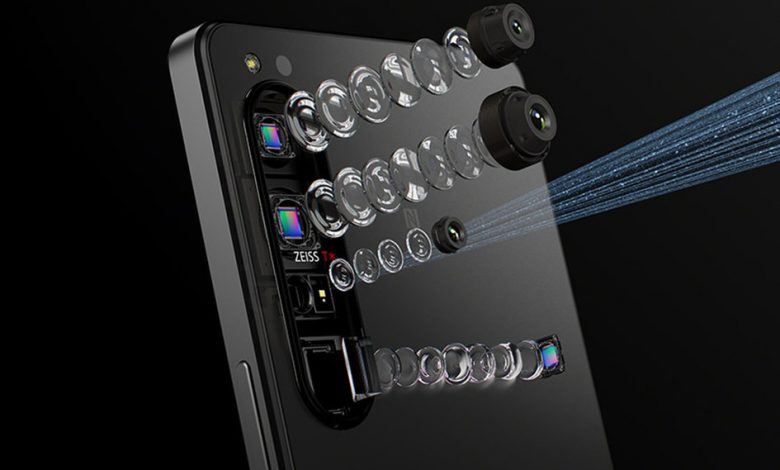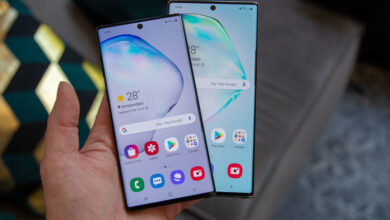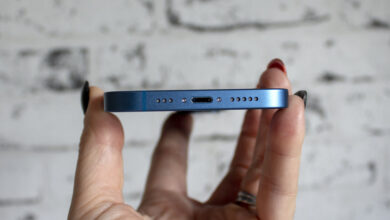What is true optical zoom on the Sony Xperia 1 IV?

[ad_1]
(Pocket-lint) – Sony’s flagship Xperia 1 IV smartphone is packed with incredible features, one of the most exciting among them is the first true optical zoom lens to be found on a smartphone.
But, you may be wondering what exactly true optical zoom means, and how it compares to current smartphone tech. So, let’s dig in and find out what it’s all about.
How zooming works on most smartphones
Most smartphones have fixed focal length cameras. In traditional photography, these are known as prime lenses and are often used due to their excellent image quality and affordability when compared with premium zoom lenses. Photographic zoom lenses are also typically larger and heavier than prime lenses, but you might not have to carry as many lenses with you, so there’s a tradeoff in practicality.
In phones, fixed lenses make the most sense due to the size constraints. No one wants an L-shaped phone with a massive lens hanging off the back, after all. So, to get around the limitations of fixed focal lengths, smartphone manufacturers did the equivalent of what a lot of photographers do, filling their bags with prime lenses of different lengths. Of course, in the phone realm, this means having a camera array with (typically) an ultra-wide, normal and telephoto camera.
When you pinch-zoom on most smartphones, you’ll be switching between these cameras, and the focal lengths in-between are digitally cropped images from the closest wider camera. This is a very clever solution, but it means that the image gets significantly worse in-between focal lengths. It can also be quite a jarring jump when you hit the next lens, as the colour reproduction of the auxiliary lenses doesn’t always match as closely as we’d like.
How true optical zoom works on the Xperia 1 IV
The Sony Xperia 1 IV has both standard and ultra-wide fixed cameras alongside an 85mm – 125mm equivalent telephoto zoom lens. The telephoto lens has true optical zoom, which means that it works in a similar way to a traditional zoom lens for DSLRs and mirrorless cameras, only on a much smaller scale.
Zoom lenses work by physically moving optical elements in order to change the focal length. The easiest way to think about it is by imagining magnifying glass. The further back you pull a magnifying glass, the larger the object that you are looking at appears to be. Zoom lenses are a bit smarter than that, but the basic principle is the same. To fit this into the phone, Sony has mounted the camera sideways and uses a periscope-like method to shoot around the corner – clever stuff.
In practice, the addition of true optical zoom means that focal lengths between 85mm and 125mm benefit from a mechanical zoom, rather than digital cropping. All of the in-between focal lengths will retain the same quality, colour accuracy and resolution as the ones at the end of the scale.
How true optical zoom can benefit you
On the Xperia 1 IV, Sony is still relying on fixed focal lengths for the ultra-wide and main cameras, most likely due to size constraints. Although, it would be amazing to see the entire range covered by one optical zoom in the future.
For now, though, we think this is a smart way to approach the problem. When you’re shooting with the main or ultra-wide sensor, chances are that you can simply walk closer, or further away from your subject. With telephoto shots, on the other hand, walking closer might not be an option at all.
In that case, if your ideal framing would require a 95mm focal length, for example, then you’d be able to zoom to it without any loss of quality. With a system that relies on fixed cameras, you’d instead be reducing the quality significantly by digitally cropping to your desired frame.
The optical zoom can be a great tool for video, too, allowing for smooth cinematic zooms and maybe even the famous Vertigo effect, if you’re feeling creative.
squirrel_widget_6957625
Writing by Luke Baker.
var _pl_settings={“lang”:”en-gb”,”language”:”English”,”lang_name”:”English”,”article_adverts”:true,”super_tag”:”Phones”,”article_id”:161083,”targeting”:[[“Tag”,[“Sony”,”Phones”]],[“Type”,[“news”]],[“Language”,[“English”]],[“PageStyle”,[“Article”]],[“inskin_yes”,[“true”]],[“Gallery”,[0]],[“Supertag”,[“Phones”]],[“PageID”,[“161083”]]]},_pl_files={“low”:[“https://apis.google.com/js/platform.js”,”https://connect.facebook.net/en_GB/all.js#xfbml=1&appId=373440233087″,”https://platform.twitter.com/widgets.js”,”//cdn.viglink.com/api/vglnk.js”],”high”:[]},___gcfg={“lang”:”en-GB”},___pl_lang={“lang”:”en-gb”,”lang_name”:”English”},_sf_async_config={“uid”:12986,”domain”:”pocket-lint.com”,”useCanonical”:”true”,”sections”:”Phones, English”,”authors”:”Luke Baker”},vglnk={“key”:”d70aaa6cc9f811e1c068c9f6a8469e19″};
!function (f, b, e, v, n, t, s) {
if (f.fbq) return;
n = f.fbq = function () {
n.callMethod ?
n.callMethod.apply(n, arguments) : n.queue.push(arguments)
};
if (!f._fbq) f._fbq = n;
n.push = n;
n.loaded = !0;
n.version = ‘2.0’;
n.queue = [];
t = b.createElement(e);
t.async = !0;
t.src = v;
s = b.getElementsByTagName(e)[0];
s.parentNode.insertBefore(t, s)
}(window, document, ‘script’,
‘https://connect.facebook.net/en_US/fbevents.js’);
fbq(‘init’, ‘379461843790745’);
fbq(‘track’, ‘PageView’);
[ad_2]
Source link





